OnePlus 2 vs Samsung Galaxy S6: Android face-off
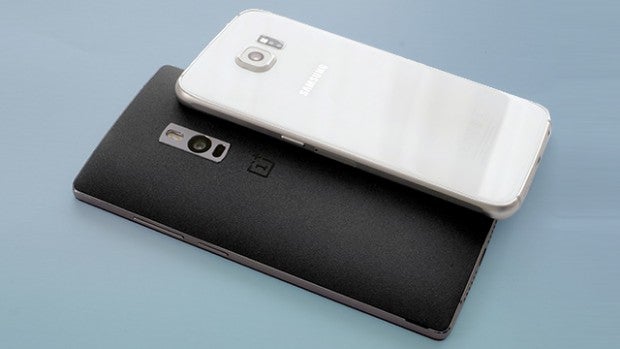
David vs Goliath: Android Edition. How does the OnePlus 2 fair against the Samsung Galaxy S6?
Can a sub-£250 phone really take on what is perhaps this year’s best all-round flagship Android, the Samsung Galaxy S6? That’s what we’re asking today, and our affordable superhero is the OnePlus 2.
This is just the second OnePlus phone, but it has arrived with just as big a splash as the original OnePlus One. Why? It’s a terrific bargain.
For £239 (£289 for 64GB) you get a phone that you can imagine selling for around £500 if it had another brand name stamped on it. But is it the phone to buy this year? Let’s find out.
See also: OnePlus 2 vs iPhone 6
OnePlus 2 vs Samsung Galaxy S6: Price
OnePlus 2: £239 (16GB), £289 (64GB), not on contract
Samsung Galaxy S6: From £409 (16GB) to £626 (128GB), around £33 on contract
There’s no getting around it: the OnePlus 2 is a lot cheaper than the Samsung Galaxy S6. It starts at £239, a clear mid-range price for what is a pretty high-end phone.
However, since its launch the price of the Samsung Galaxy S6 has come down a lot too. You can get the 32GB version for as little as £410 SIM-free, significantly less than the original price. At launch it sold for well over £500.
You’ll pay around £490 for the SIM-free 64GB Galaxy S6 though, meaning the 64GB OnePlus 2 is around £200 cheaper. That’s still an awful lot of money.
There’s the ease of purchase to consider too, mind. You can rock up to any phone shop and buy a Samsung Galaxy S6 these days, but you need an invite to buy a OnePlus 2. You have to apply for one over at the OnePlus website, although if you’re desperate OnePlus also gives them away on Twitter, their forums and other social networks as a way to make fans all the more rabid.
Watch the OnePlus 2 hands-on video:
In short: OnePlus 2 is cheaper, Samsung Galaxy S6 is way easier.
OnePlus 2 vs Samsung Galaxy S6: Design
OnePlus 2: 151.8 x 74.9 x 9.9mm, 175g
Samsung Galaxy S6: 143.4 x 70.5 x 6.8 mm, 138g
Do you want a big phone, or a very big phone? That’s roughly the categories these phones fit into. The Samsung Galaxy S6 is significantly smaller than the OnePlus 2, with a both thinner and less-wide frame.
The difference in size is down to two main things: screen size and battery size. The OpenPlus 2’s are bigger in both cases.
See also: OnePlus 2 review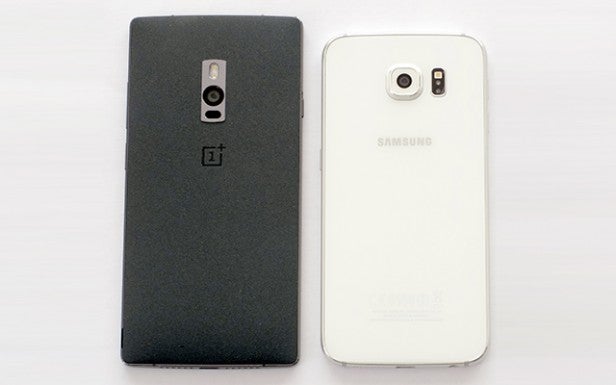
Actually handling the two phones, the Galaxy S6 clearly feels smaller, but the difference is not world-changing. As the OnePlus 2 has a smoothly curved back while the S6 has a boxier design, you’d never guess there is a whole 3mm separating these two phones in thickness.
The Galaxy S6 does feel more expensive, though. Its front and back are both panes of Gorilla Glass 4, where the OnePlus 2 has Gorilla Glass on the front, but a more familiar-sounding removable plate of plastic on the back. It doesn’t feel familiar, though, not unless you’ve spent a lot of time with the original OnePlus One.
OnePlus calls the OnePlus 2’s finish sandstone, and it has some of the grainy feel of real-life sandstone, but with a hint of fabric-like warmth in there too. It’s a bit weird, but there are also other finishes on offer from the OnePlus store if you’d prefer wood or kevlar. These come at a slight premium of around £20.
Related: Best Mobile Deals: Top Smartphone offers this month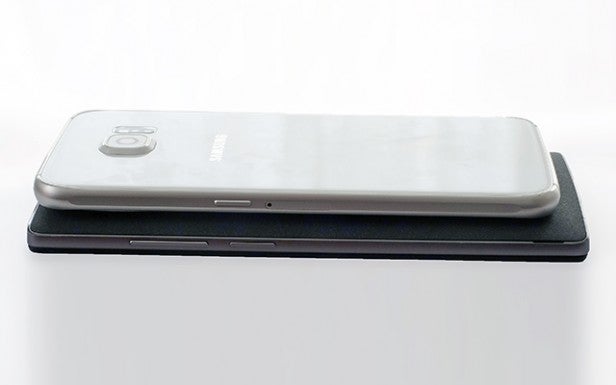
OnePlus 2 vs Samsung Galaxy S6: Connectivity
OnePlus 2: fingerprint scanner, USB-C
Samsung Galaxy S6: fingerprint scanner, HR/O2 sensor
OnePlus is a pretty brash company at times, so it’s no surprise there are a few loud extras in the OnePlus 2’s arsenal. The most important is a USB-C socket. This sits in place of the usual microUSB port, taking on charging and any wired data-flinging duties. We’ll start to see this in more phones soon, and its main appeal is that it is reversible: finally.
It doesn’t get you USB 3.0 speeds, though, so don’t get too excited. Functionally it’s business as usual. It just has a different plug.
The Samsung Galaxy S6 has a trusty old microUSB port, through which you can fast-charge the phone’s battery. Charging is faster than with the OnePlus 2.
See also: OnePlus 2 tips and tricks
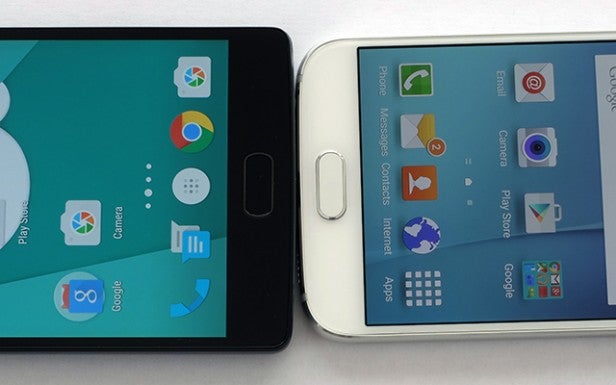
Both phones also have fingerprint scanners, and both their positioning and performance are very similar. The scanners sit under the home buttons below the display, and both are top-notch. They’re perhaps a bit slower than the iPhone 6’s Touch ID, but they’re accurate and fairly fast.
The big differerence is that while the Samsung Galaxy S6’s scanner sits on a clicky button, the OnePlus 2’s is part of a static soft key pad. However, as it’s indented it’s just as easy to use. We love both scanners, more-or-less equally, although at present Samsung makes a bit more use of in the software, wiring it into payment permissions.
Outside of the scanner area, the more expensive Samsung Galaxy S6 also has a few extras up its sleeve. There’s an array of sensors by the camera flash that’ll measure your heart rate and blood oxygen level. It’s a neat way to measure your resting heart rate. However, it’s no good for mid-exercise use so isn’t really an essential extra. Especially not when there are apps that can use the camera of almost any phone to tell you your heart rate.
Also great for some, useless for others, is the IR transmitter. This lets the Samsung Galaxy S6 function as a universal remote. It’s perfect if you have a habit of losing the TV remote down the back/side/front/inside of the sofa. You don’t get one of those in the OnePlus 2, and we kinda wish we did given how geek-friendly it is.
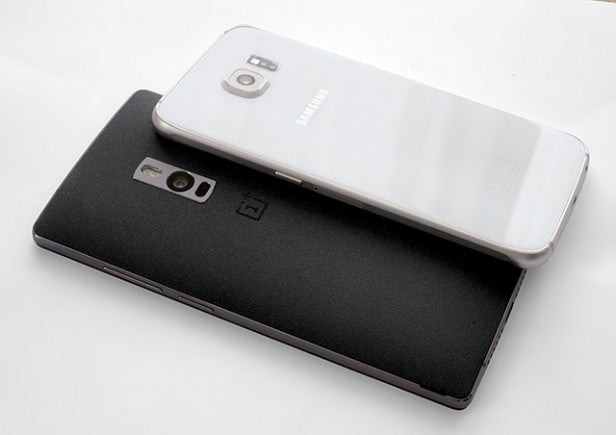
OnePlus 2 vs Samsung Galaxy S6: Screen
OnePlus 2: 5.5-inch 1080p IPS LCD screen
Samsung Galaxy S6: 5.1-inch 2560 x 1440 pixel Super AMOLED Screen
An area where the Samsung can pull away from the OnePlus 2, in tech terms at least, is screen quality. While smaller, the Samsung Galaxy S6 offers much higher resolution, far better black level and greater peak brightness, improving its ability to cope with very bright outdoors conditions.
The Samsung Galaxy S6 has a 5.1-inch QHD or 2560 x 1440 pixel Super AMOLED screen where the OnePlus 2 has a 5.5-inch Full HD LCD one. Both are great examples of their respective types, with excellent colour that can provide you with a natural look. On the Samsung Galaxy S6 you need to fiddle in the Settings menu to get this, though, as most of the screen modes oversaturate the colours for extra ‘pop’.
In a battle of tech and pure image quality, the Samsung Galaxy S6 is the clear winner. However, in real life the debate isn’t quite so easy. You see, a 0.4-inch screen increase is no small-fry upgrade, and if you want to watch movies on-the-go or at the gym, it may be more important than the Samsung’s slightly superior quality. To while away 30 minutes of boring exercise on a static bike, we’d actually pick the OnePlus 2.
You see, in a lot of conditions the image quality benefits of the Samsung Galaxy S6 aren’t always super-obvious. Screen size matters too.
See also: OnePlus 2 vs OnePlus One
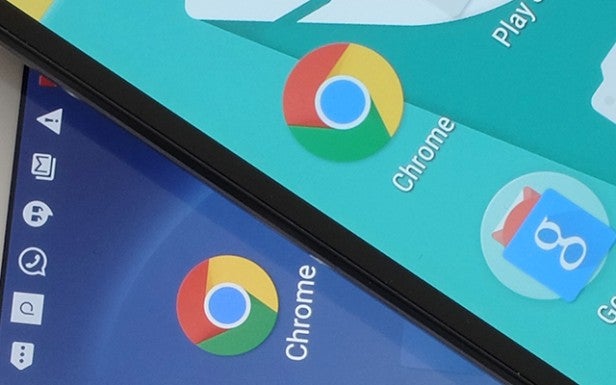
OnePlus 2 vs Samsung Galaxy S6: Storage
OnePlus 2: 16GB or 64GB, non-expandable
Samsung Galaxy S6: 32/64/128GB, non-expandable
We don’t like it when phones leave out a microSD slot, but we just can’t stay mad at this pair. Neither has a memory card slot.
It makes the decision about the model you pick all the more important. The OnePlus 2 starts at 16GB for £239, with the 64GB version available for £50 more. While we can live with 16GB just fine, the upgrade is worth it if you want a phone you can use as an iPod-a-like.
Samsung asks a bit more for its upgrades, but then the base-level model is even better, with a very reasonable 32GB storage. This then shoots up to 64GB (around a £80-90 upgrade) and 128GB (around £130 upgrade) memory. The OnePlus level-ups are cheaper, but then that’s no surprise when Samsung’s microSD-cutting move is basically mimicking Apple.
OnePlus 2 vs Samsung Galaxy S6: Software, Power and Benchmarks
OnePlus 2: Snapdragon 810 Octa-core, 4GB DDR4
Samsung Galaxy S6: Exynos 7420, 3GB DDR4
The OnePlus 2 and Samsung Galaxy S6 both have top-end CPUs. No scrimping here. Both are octa-core and both have four Cortex-A57 cores and four Cortex-A53 cores, which can roughly be described as ‘power’ and ‘efficiency’ sets.
However, the Samsung Galaxy S6 has the clear advantage as its CPU is made using a 14nm process while the Snapdragon 810 is 20nm. What this means is that the Samsung has smaller transistors, letting it work more efficiently and produce less heat doing so.
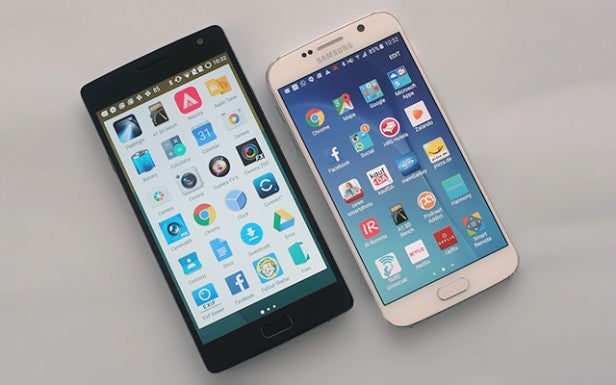
The benefit of the OnePlus 2 (64GB version) is that is has 4GB RAM, the Samsung Galaxy S6 has 3GB. At present there are no obvious bonuses to this, but it may help with futureproofing.
Ultimately, both of these phones feel great in use. The Samsung UI puts a bit more of an emphasis on a quick feel, but they’re both essentially almost lag-free and can handle anything you throw at them. Their UI styles are fairly similar too. The OnePlus 2’s Oxygen interface is basically plain Android Lollipop with extras hidden under the surface.
The Galaxy S6’s TouchWiz variant has a different look, but in cutting out just about all visual architecture, it ends up feeling fairly similar. One of the greatest differences is that Samsung cuts down on the slightly languorous feel Google injected into Android with Lollipop 5.0.
But which is actually the most powerful? For the spec heads out there, here are the benchmark results, using the 64GB OnePlus 2 and 32GB Galaxy S6:
RAM
Samsung Galaxy S6: 8112MB/s
OnePlus 2: 7998MB/s
Storage
Samsung Galaxy S6: 330MB/s read, 155MB/s write
OnePlus 2: 234MB/s read, 124MB/s write
Geekbench 3:
Samsung Galaxy S6: 4901
OnePlus 2: 4445
Sunspider 1.0.2 (lower is better):
Samsung Galaxy S6: 802.9ms (Chrome), 390ms (stock)
OnePlus 2: 697ms
As you can see, the Samsung Galaxy S6 has a slight upper hand in all fields (aside from Sunspider: Chrome), but not a huge one. They belong in the same performance class, especially when you consider that rival Androids from HTC and LG often use similar-or-lesser specs while selling for the same price as the Galaxy S6.
OnePlus 2 vs Samsung Galaxy S6: Camera
OnePlus 2: 13-megapixel rear, 5-megapixel front, OIS, laser focus
Samsung Galaxy S6: 16-megapixel rear, 5-megapixel front, OIS
The Samsung Galaxy S6 has a lot of features all-round, but the OnePlus 2 camera actually has something the Samsung doesn’t: laser autofocus assist. What this does is to fire of a laser out of the back which then returns the phone after bouncing off whatever it hits. The time taken tells the phone how far away the subject is.
In theory it should make the OnePlus 2 camera faster and more accurate at focusing. However, we find that the Samsung Galaxy S6 is quite a lot quicker to focus and shoot in general than the OnePlus 2. While not slow, the OnePlus isn’t quite among the very fastest phone cameras around.
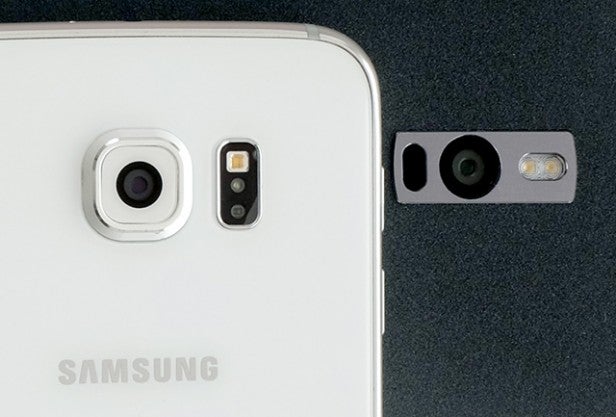
Both phones offer great general image quality, but the Samsung is clearly the better of the two. It’s not really the detail we notice, although with a 16-megapixel sensor the Galaxy S6 is able to capture a bit more detail than the 13-megapixel OnePlus 2 in some conditions. The Samsung Galaxy S6 is that bit more capable of dealing with difficult lighting situations, where there are bright and dark parts in the same scene.
A lot of this comes down to the Samsung Galaxy S6’s great HDR mode, which as standard sits on an ‘Auto’ setting, used when needed, and to the extent required. The OnePlus 2 has a tendency to over-do HDR a bit, making colours lose all subtlety when a more pronounced HDR effect is needed.
Still, it’s great at other times. Without HDR the OnePlus 2’s dynamic range is good for a phone of its price, and it’s a surprising low-light hit. Thanks to its OIS, it can take detailed-looking shots even when shooting by moonlight or 1am street lights. It actually gets close to the Samsung Galaxy S6 in quality terms. Impressive stuff.
Here are the actual shots. We’ve let both cameras use the full extend of their sensor resolution (the S6 sensor is 16:9), so as not to give either a head start:
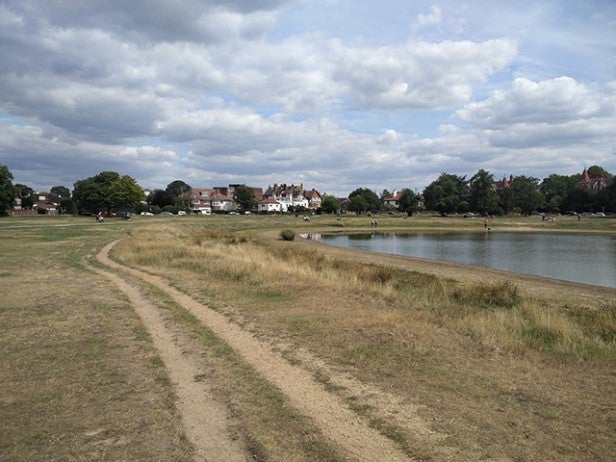
OnePlus 2
Galaxy S6
The Samsung shot has a warmer, more attractive tone with this scene. Detail captured was great in both cases, though.

OnePlus 2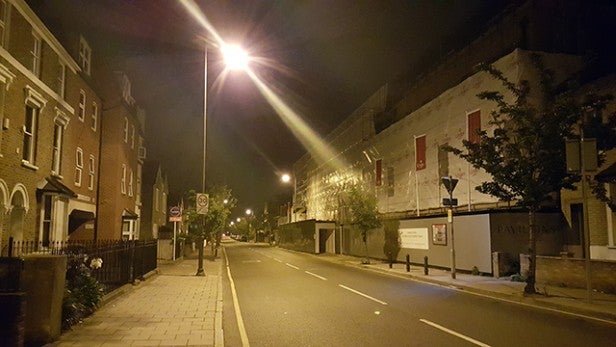
Galaxy S6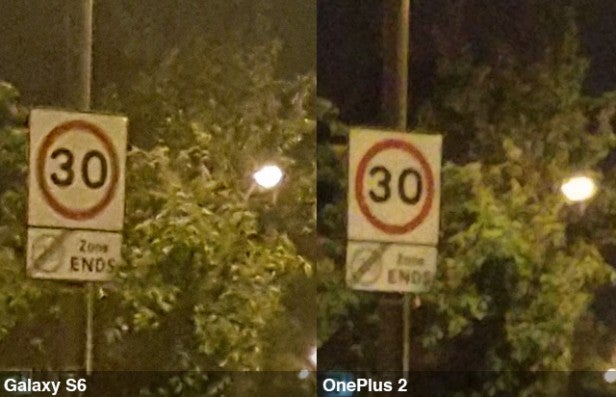
Conversely, at night the OnePlus tends to bring more colour and greater contrast than the Galaxy S6. It also has less distracting distortion caused by the street lamp. Up close, though, the Galaxy S6 has that bit more detail.

OnePlus 2
Galaxy S6
The Galaxy S6 shot here is that bit punchier, although the OnePlus 2 has a good go at it too. Check out the trees in the background. They have slightly higher contrast in the Samsung shot, where they seem ever-so-slight greyed-out in the OnePlus 2 photo.
OnePlus 2 vs Samsung Galaxy S6: Battery Life
OnePlus 2: 3300mAh
Samsung Galaxy S6: 2550mAh
Look at the numbers and you’d assume the OnePlus 2 would blow the Samsung Galaxy S6 out of the water for battery stamina. After all, with 3300mAh to the Samsung Galaxy S6’s 2550mAh it has an extra 750mAh to play with.
In reality, though, it doesn’t quite work that way. Both of these phones have pretty good battery life, and in some use scenarios the Samsung can actually outlast the OnePlus 2. For example, when playing back an MP4 video file the OnePlus 2 lasts for around 11.5 hours where the Galaxy S6 soldiers on for 14 hours.
Not as simple as it seems, is it? It all depends on what you do with the phone, but in general use we found the stamina of the two to be surprisingly similar. With moderate use you’ll get a day and a half off a charge, with the phone conking out around 3pm on day two. However, real power users won’t find it difficult to drain the thing in one day.
What could the Samsung Galaxy S6 do with a 3300mA battery? Now that’s something we’d like to see.

OnePlus 2 vs Samsung Galaxy S6: Speaker quality
OnePlus 2: single driver, bottom edge
Samsung Galaxy S6: single driver, bottom edge
These phones both take a similar speaker style to the iPhone 6. You don’t get stereo or front-facing speakers, just the one unit on the bottom edge.
On the OnePlus 2 it look as though there are two speakers, or at least two speaker grilles. However, one isn’t even connected to the speaker enclosure. It’s just there for the look. The Samsung Galaxy S6 takes a more truthful approach, with just the one grille.
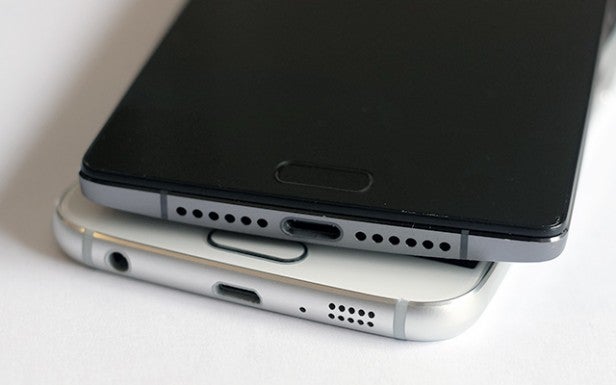
The Samsung Galaxy S6 gets you better sound quality too. While both are fairly loud, the Samsung has much more mid-range clout, giving voices greater presence as well as sound that simple doesn’t appear quite as constrained as some phones. The OnePlus 2 has a more bog-standard mobile phone tone, although it’s still better than a lot of the phones of its price.
Verdict
Better screen, better camera, better speakers: there are reasons to pick the Galaxy S6 over the OnePlus 2. However, given the Samsung Galaxy S6 costs at least £200 more, we’d strongly recommend considering the OnePlus phone if you have the patience to wait for an invite to buy to arrive.
We still love the S6 camera, but things like the screen quality improvements don’t always add up to a better experience. At certain times, we’d be happy to trade away the OLED chops for those extra 0.4 screen inches. Money no object? We’d probably pick an S6, but our bank balance is crying out for that OnePlus 2.



